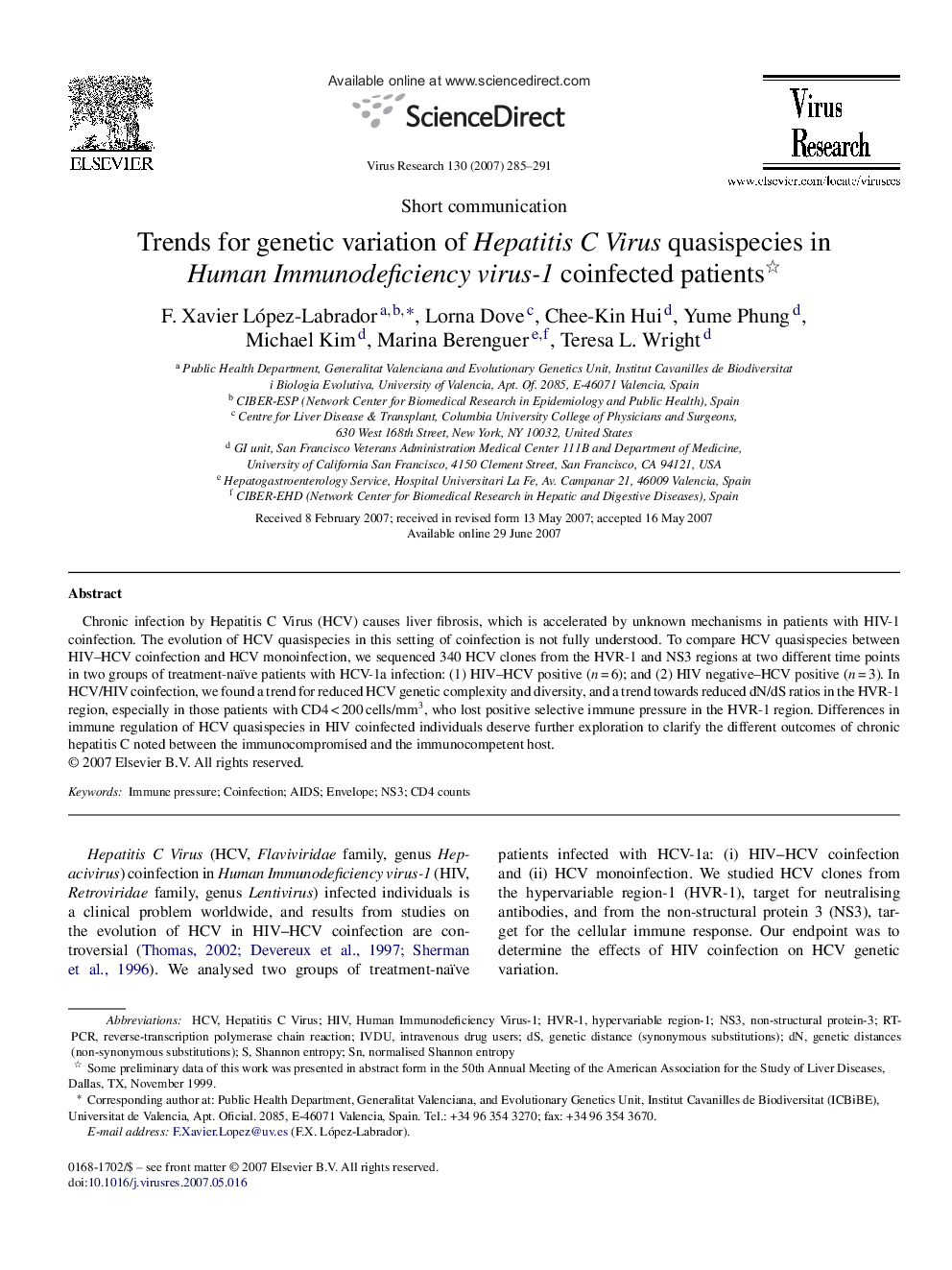| Article ID | Journal | Published Year | Pages | File Type |
|---|---|---|---|---|
| 3430675 | Virus Research | 2007 | 7 Pages |
Chronic infection by Hepatitis C Virus (HCV) causes liver fibrosis, which is accelerated by unknown mechanisms in patients with HIV-1 coinfection. The evolution of HCV quasispecies in this setting of coinfection is not fully understood. To compare HCV quasispecies between HIV–HCV coinfection and HCV monoinfection, we sequenced 340 HCV clones from the HVR-1 and NS3 regions at two different time points in two groups of treatment-naïve patients with HCV-1a infection: (1) HIV–HCV positive (n = 6); and (2) HIV negative–HCV positive (n = 3). In HCV/HIV coinfection, we found a trend for reduced HCV genetic complexity and diversity, and a trend towards reduced dN/dS ratios in the HVR-1 region, especially in those patients with CD4 < 200 cells/mm3, who lost positive selective immune pressure in the HVR-1 region. Differences in immune regulation of HCV quasispecies in HIV coinfected individuals deserve further exploration to clarify the different outcomes of chronic hepatitis C noted between the immunocompromised and the immunocompetent host.
